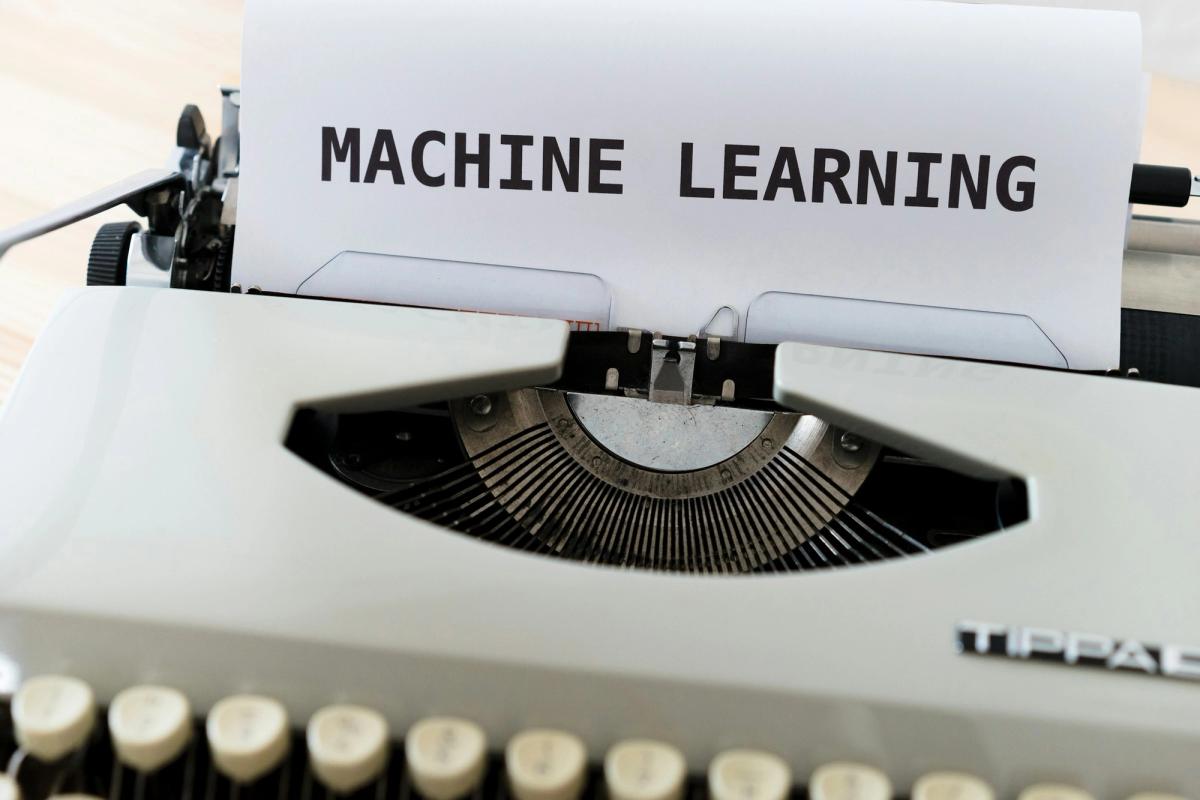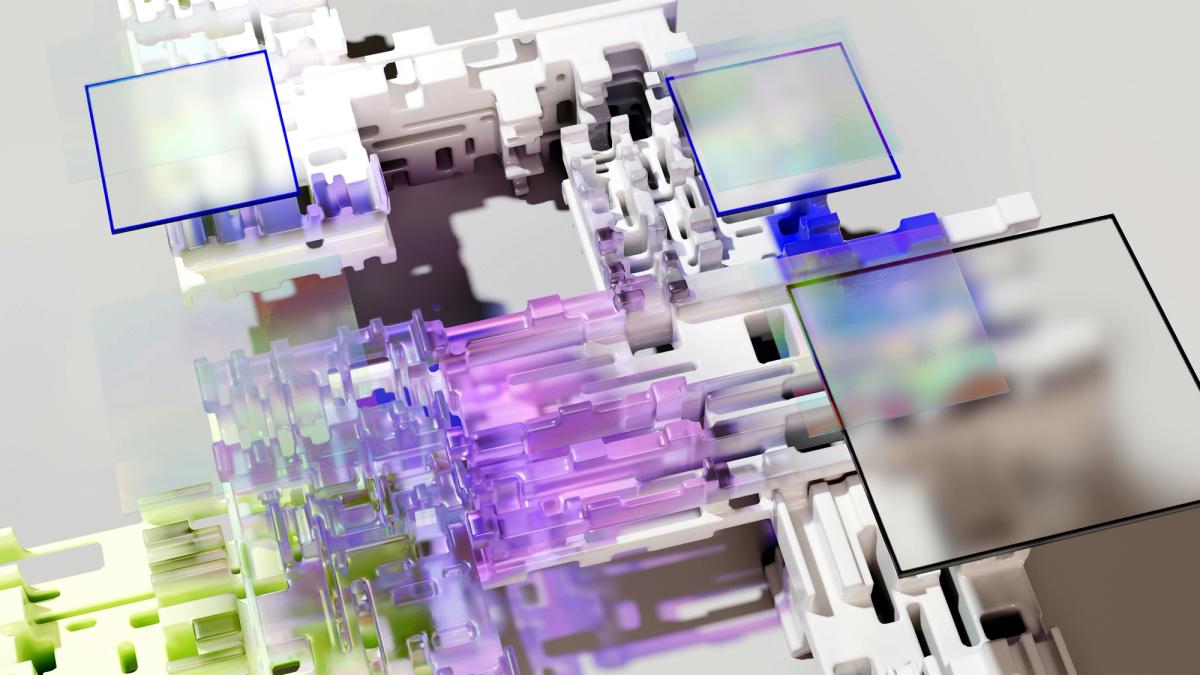What Is Quantization in Machine Learning & How It Speeds Up Inference
Published on Jun 25, 2025
Get Started
Fast, scalable, pay-per-token APIs for the top frontier models like DeepSeek V3 and Llama 3.3. Fully OpenAI-compatible. Set up in minutes. Scale forever.
Machine learning inference has made significant strides in recent years, but it still faces challenges when deployed in real-world scenarios. For instance, models that run well in controlled environments can become sluggish when exposed to the noise and unpredictability of new data. Quantization can help. By reducing the precision of the numbers used in model calculations, quantization allows machine learning models to run faster and use less memory. This
blog will explore quantization and how it can help you build and deploy machine learning models that run faster, use less memory, and deliver real-time performance without sacrificing accuracy. But What is Inference in Machine Learning?
AI inference APIs can help you achieve your quantization goals. These tools make it easy to integrate quantized models into existing applications so that you can deliver faster, more efficient machine learning inference to your users without a hitch.
What is Quantization in Machine Learning?

Quantization in machine learning refers to converting high-precision numbers (typically 32-bit floating-point) into lower precision formats, like 8-bit integers. Imagine trying to paint a picture with fewer colors; you can still create a recognizable image, but the details might be a bit blurrier. That’s essentially what quantization does to the numbers in your model.
Machine learning models, especially the big ones, deal with millions (sometimes billions) of these numbers. And the precision of these numbers directly impacts how much memory and computational power they require. If we can reduce that precision, we make the model smaller and faster, which is a massive win for deployment.
Why is Quantization Important?
Modern machine learning models are growing at an explosive rate. Think about GPT models or huge vision models like GPT-4 or ResNet-152. They’re power-hungry, both in terms of computation and memory. That’s fine when you’ve got the horsepower of cloud servers, but what happens when you need to run them on your phone or a tiny IoT device? That’s where quantization comes into play.
It’s critical for reducing large models' computational footprint without making massive performance sacrifices. By reducing the size of these models, we can deploy them on edge devices, phones, smart speakers, wearables, and even tiny microcontrollers, where resources are scarce.
Powering Efficiency in Deep Learning
Think of a deep learning model as a Ferrari. It's super powerful, but you wouldn’t drive it around a crowded city; it’s impractical. Quantization is like swapping that Ferrari for a compact car. It still gets you where you’re going, but more efficiently.
In the real world, you’re reducing the model’s size, the time it takes to process information (latency), and the energy it consumes, which is crucial in environments where battery life and computational power are limited.
How Does Quantization Work?
Quantization allows machine learning models to run faster and more efficiently by reducing the precision of their underlying numerical operations. The key to understanding quantization is recognizing that it doesn’t simply compress a model’s size.
Instead, it reduces the precision of the numbers that make up the model, lowering the memory and computational requirements for running the model. Quantization can take various forms, but they all work toward the same goal of improving the efficiency of machine learning models.
Types of Quantization
When we talk about quantization in machine learning, there are different ways to approach it. Think of it as preparing a meal; you can add the seasoning after cooking (post-training quantization) or cook with the seasoning from the beginning (quantization-aware training). Let’s break it down.
1. Post-Training Quantization
Imagine that you’ve just trained your model, and it’s performing great. But now you need to deploy it in a resource-constrained environment, like on a mobile device. This is where post-training quantization (PTQ) comes in. With PTQ, you don’t have to retrain the model from scratch; instead, you quantize it after it’s been thoroughly trained, which is super convenient if you want to save time and resources.
PTQ reduces the precision of the weights and activations in your already-trained model. This method is quick and easy, but it might lead to a slight drop in accuracy since the model wasn’t trained to operate with lower precision. These subtypes enhance deep learning efficiency by optimizing model performance and reducing computational requirements:
Dynamic Quantization
Think of dynamic quantization as on-the-fly optimization. It keeps the weights in their original high-precision format (say, 32-bit floating-point) but quantizes them to a lower precision (usually 8-bit integers) during runtime. This means less work for your processor during inference.
Dynamic quantization works exceptionally well for models where most of the computation is in the fully connected layers, like NLP models (e.g., BERT). Does dynamic quantization impact accuracy? Usually, the performance impact is minimal, but the speed improvements can be significant.
Static Quantization
Static quantization goes one step further. Not only are the weights quantized ahead of time, but so are the activations (the output values between layers). This requires you to perform a calibration step on some sample data to figure out the range of values for activations. The benefit? Static quantization tends to provide even better performance improvements because you’re not doing any precision adjustments during runtime.
Here’s a great example: In mobile applications, static quantization can drastically cut inference time without needing fancy hardware like GPUs or TPUs.
2. Quantization-Aware Training (QAT)
Now, let’s say you’ve got a high-stakes application, maybe you’re working on a self-driving car or a medical diagnosis model. Even the most minor dip in accuracy could be problematic in these cases.
That’s where Quantization-Aware Training (QAT) comes into play. Instead of waiting until the model is fully trained and quantizing it, QAT introduces quantization during training. It’s like teaching the model how to perform well under low precision.
Understanding Quantization-Aware Training (QAT)
This way, your model learns to cope with the reduced precision of the weights and activations during training. The result? You often get better accuracy compared to post-training quantization methods. If you were training for a marathon in high-altitude conditions, your body would adapt to the lack of oxygen, making you stronger.
Similarly, QAT trains your model in a “lower precision” environment, making it more robust. You might be thinking, Why doesn’t everyone just use QAT? Well, it’s computationally more expensive and can take longer to train. But it's worth the effort if you need the highest possible performance after quantization.
3. Weight Quantization
Weights are the backbone of any machine learning model. In most models, these weights are stored as 32-bit floating-point numbers. You don’t always need that much precision. Weight quantization reduces these 32-bit values to something smaller, typically 8-bit integers. Reducing weight precision has minimal impact on accuracy in many cases.
Efficient Weight Precision Reduction
Models can still perform incredibly well with 8-bit weights, but they become much more efficient regarding memory usage and speed. Think of it as carrying a lighter backpack on a hike; you still get to the top of the mountain but use less energy.
If your model has millions of parameters, each taking up 32 bits, switching to 8-bit integers cuts your model size by a factor of four. That’s massive, especially when deploying models on edge devices with limited memory.
Specific Bit Widths
Most commonly, weights are quantized to 8-bit precision. There’s ongoing research into 16-bit quantization for situations where accuracy is critical, and even lower bit widths (e.g., 4-bit) for ultra-efficient models where some loss in precision is acceptable.
4. Activation Quantization
Activations are the values passed between layers of a model during inference. If you’ve already reduced the precision of your model’s weights, doing the same with activations makes sense.
Activation quantization reduces the accuracy of these intermediate values during inference, improving memory efficiency even further.
Activation Quantization for Faster Inference
Activations are quantized after the model processes each layer. This step is crucial because larger models often experience computational bottlenecks. Reducing the precision of activations speeds up the model’s performance during inference while reducing memory load.
Let’s say you’ve built a deep neural network that runs on an edge device like a smart camera. Reducing the precision of activations through quantization will allow the model to process video data faster without needing heavy-duty hardware.
Static vs Dynamic Quantization in Machine Learning

Static quantization converts the weights and activations of a neural network to lower precision (e.g., from 32-bit floating-point to 8-bit integers) during the training or post-training phase. Here we have a more detailed breakdown of static quantization:
Calibration Phase
A calibration step is performed, where the model is run on a representative dataset. This step is crucial as it enables the gathering of distribution statistics for the activations, which are then used to determine the optimal scaling factors (quantization parameters) for each layer.
Quantization Parameters
In this step, the model weights are quantized to a lower precision format (e.g., INT8). The scale and zero point for each layer are computed based on the calibration data and remain fixed during inference.
Inference
During inference, both the weights and activations are quantized to INT8. Since the quantization parameters are fixed, the model utilizes these predetermined scales and zero points to perform fast, integer-only computations.
Performance
Static quantization typically results in more efficient execution compared to dynamic quantization because all the computations can be done using integer arithmetic, which is faster on many hardware platforms. It often achieves better accuracy compared to dynamic quantization, as the quantization parameters are finely tuned using calibration data.
Use Cases of Static Quantization
Static quantization is well-suited for scenarios where the input data distribution is known and can be captured accurately during the calibration phase. It’s commonly used in deploying models on edge devices where computational resources are limited.
Dynamic Quantization: An Adaptive Approach to Efficient Neural Network Inference
Dynamic quantization quantizes only the weights to a lower precision and leaves the activations in floating-point during the model’s runtime. A deeper look at dynamic quantization:
No Calibration Needed
Dynamic quantization eliminates the need for a separate calibration phase. The quantization parameters are determined on the fly during inference. This makes it more straightforward to apply since it eliminates the need for a representative calibration dataset.
Quantization Parameters
Model weights are quantized to lower precision as the INT8 format before inference. During inference, activations are dynamically quantized, meaning their scale and zero point are computed for each batch or layer during execution.
Inference
Weights are stored and computed in INT8, but activations remain in floating-point until they are used in computations. This enables the model to adapt to input data variability at runtime by dynamically recalculating the quantization parameters.
Performance
Dynamic quantization typically incurs a lower reduction in model accuracy compared to static quantization, as it can adapt to changes in input data distribution on the fly. Nevertheless, it may not achieve the same level of inference speedup as static quantization because part of the computation still involves floating-point operations.
Use Cases
Dynamic quantization is particularly useful in scenarios where the input data distribution may vary and cannot be easily captured by a single representative dataset. It is often used in server-side deployments, where computational resources are less constrained compared to those of edge devices.
Static Quantization Workflow
- Model Training: Train your model normally.
- Calibration: Run the model on a representative dataset to determine quantization parameters.
- Quantization: Convert model weights and activations to lower precision using fixed quantization parameters.
- Inference: Perform fast, integer-only inference.
Dynamic Quantization Workflow
- Model Training: Train your model normally.
- Quantization: Convert model weights to lower precision.
- Inference: Dynamically quantize activations during inference, allowing for adaptable performance based on input data.
How Does Quantization Affect Precision?

Machine learning models often contain complex mathematical structures that require extensive evaluation resources. When models are deployed for inference, it is common to want them to run as efficiently as possible. Efficient models return predictions quicker and consume less power and memory, making them ideal for edge devices and mobile applications deployment.
There’s often a trade-off between efficiency and numerical precision. To improve efficiency, you can quantize a model, reducing its bit-width. While this can lead to considerable gains in performance, it can also come at the cost of precision and introduce errors.
Reducing Bit Width: How It Works and Why Precision Matters
To understand why quantization affects precision, imagine asking someone for directions. The person might provide a turn-by-turn list of streets, each street's names, and the roads' names before and after each street.
Such directions are highly precise but might be hard to remember. Conversely, someone might say something like "second left, fourth right, first left." This is much easier to remember, albeit less precise.
Understanding Quantization in AI
In AI, quantization reduces the number of bits used by data points. The loss of bits means some amount of precision may be lost, which can result in more errors in the output (just as a driver might misidentify the "fourth left" in the example above without the street name). There are different types of quantization, some of which are more precise than others.
Not All Use Cases Need High Precision
Companies or users have use cases where the quantized AI model is "good enough." The use case often does not need exact results. One example of such a use case is tracking social media trends and mentions without needing exact data points, focusing on overall sentiment and engagement.
The Impact of Quantization on Model Accuracy
When you quantize a model, lowering the precision of its weights and activations, you inevitably introduce some level of approximation. The lower the precision (e.g., 8-bit or 4-bit), the greater the risk of losing subtle variations in data that the model might rely on for fine-tuned predictions. In practice, models with large ranges of values or those particularly sensitive to small variations tend to experience more accuracy degradation when quantized.
For example, image classification models that need to distinguish between similar features in images (like differentiating between different breeds of dogs) can lose some of that fine detail in their predictions when quantized.
Balancing Accuracy and Performance
Natural language processing (NLP) models, which often rely on nuanced relationships between words, may suffer if the quantization causes a loss in precision at critical points, such as in attention mechanisms.
But don’t worry, quantization doesn’t always mean you’ll have to give up accuracy! In many cases, especially for simpler models or tasks that are more forgiving, the drop in accuracy is negligible while the performance gains can be massive.
Real-World Examples of Quantization Benefits
Let me walk you through a couple of real-world examples where quantization has made a significant difference:
Mobile Networks
Think of object detection models deployed on mobile devices, like apps that use your phone camera to recognize objects in real time. Google has employed quantization techniques in TensorFlow Lite to optimize such models.
Converting models like MobileNet to 8-bit integers has achieved performance gains without significant accuracy drops. This is critical for running these models efficiently on smartphones, where both battery and computational power are limited.
Edge Devices
Quantization is often a game-changer in edge computing. Take autonomous drones, for example. When a model running on a drone detects obstacles, every millisecond matters. By quantizing the model, inference times are dramatically reduced, allowing the drone to make split-second decisions with minimal impact on its battery life.
Regarding hard data, Post-Training Quantization of models in TensorFlow Lite often leads to 2x to 4x improvements in inference speed, with only a 1–2% drop in accuracy. This is a small price to pay when you’re trying to deploy on hardware with tight memory and power constraints.
5 Reasons Why Quantization Matters More Than You Think

Quantization is a topic reserved for hardware engineers or AI researchers in lab coats. But in reality, it sits at the intersection of performance and practicality in modern machine learning. Whether you’re deploying deep learning models on edge devices, optimizing for latency, or simply looking to squeeze more performance out of your architecture, quantization plays a starring role.
Let’s look at the five key reasons why quantization is not just a technical afterthought but a strategic move in the evolution of AI deployment.
1. Drastically Reduces Model Size Without Sacrificing Much Accuracy
One of the most immediate and impactful benefits of quantization is the substantial reduction in model size. Floating-point parameters are notoriously expensive in terms of memory and storage.
Reducing Model Footprint
When you convert these high-precision values to lower-precision formats, such as 16-bit or 8-bit integers, you can shrink the overall model footprint by up to 75%, sometimes even more. This is not merely a perk for developers focusing on mobile applications or embedded systems; it’s a fundamental enabler.
Enabling Wider Deployment with Minimal Accuracy Loss
Models that once required high-end GPUs or server clusters can now run on modest devices, such as smartphones, Raspberry Pi units, and microcontrollers. Even more impressive: with techniques such as post-training quantization (PTQ) or quantization-aware training (QAT), reduced model precision typically results in minimal accuracy loss, often within just 1%.
In some cases, especially in over-parameterized models, quantization can act as a regularizer, improving generalization by eliminating noise in floating-point precision. It’s a rare instance in machine learning where you really can have your cake and eat it too.
2. Unlocks Real-Time Inference on Edge Devices
Let’s face it, nobody likes latency. If your model takes too long to respond, regardless of its accuracy or sophistication, the user experience suffers. Quantization can significantly reduce inference time, especially on:
- CPUs
- Edge accelerators
- Microcontroller-based devices
Faster Low-Precision Arithmetic
When you transition from 32-bit floating-point to 8-bit integer computations, the arithmetic becomes much faster and far more efficient. Modern processors are increasingly optimized for lower-precision math, and many edge-specific hardware platforms are designed to accelerate these types of operations.
Quantization's Role in Real-time Applications
This performance boost makes quantization indispensable for applications that rely on immediate feedback, such as:
- Real-time object detection
- Voice recognition
- Gesture control
- Augmented reality
- Medical diagnostics
In these domains, every millisecond matters. Quantization ensures that your model isn’t just innovative; it’s also quick and safe enough to keep up with real-world demands.
3. Reduces Power Consumption and Heat Output
Power efficiency might not be the most exciting benefit to discuss, but in real-world deployments, it’s critical. Floating-point operations consume significantly more power than their integer counterparts. Multiply that power draw across millions — or even billions — of model operations, and the impact becomes hard to ignore.
Energy Efficiency in Quantized Models
Quantized models significantly reduce the computational burden on devices, leading to lower energy consumption and reduced heat output. This is especially valuable in battery-operated systems, such as:
- Drones
- Wearables
- Smartphones
- Smart home devices
It doesn’t stop there. In data center environments where models are served at scale, the energy savings accumulate quickly, resulting in:
- Reduced cooling costs
- Smaller carbon footprint
- Improved compliance with green computing standards
Quantization isn’t just a tool for optimization; it’s also a step toward more sustainable AI.
4. Improves Hardware Compatibility and Leverages Specialized Accelerators
Quantization dovetails perfectly with the current hardware evolution in the AI landscape. Many of today’s cutting-edge chips—from Google’s Coral Edge TPU and NVIDIA’s TensorRT to Apple’s Neural Engine—are not just compatible with quantized models; they’re specifically engineered to accelerate them.
These accelerators are optimized for 8-bit or 4-bit computations and deliver astonishing throughput when paired with quantized models. Failing to quantize often means leaving this performance on the table.
Broad Benefits for Cross-Platform AI
And even if you’re not using dedicated accelerators, general-purpose CPUs and GPUs can still benefit from the memory and bandwidth efficiencies of lower-precision operations. In particular, for software developers building cross-platform AI applications, quantization is a key enabler of flexibility.
It allows the same model to be tailored for a variety of hardware targets—whether it’s a data center GPU, an on-device neural engine, or an edge accelerator—without rewriting core logic or managing multiple model variants.
5. Enables Scalable AI Deployment Across Platforms
One of quantization’s most underappreciated superpowers is its ability to make AI models truly portable. By adjusting precision levels, you can deploy the same architecture across a diverse range of devices, from high-performance cloud infrastructure to low-power microcontrollers in the field.
Unified Optimization Path
This flexibility is a significant asset for organizations looking to deploy AI applications across multiple platforms without maintaining separate codebases or retraining distinct models. Quantization simplifies that complexity by offering a unified optimization path. What’s more, it complements other model compression and acceleration strategies like:
- Pruning
- Knowledge distillation
- Operator fusion
The Key to Efficient Scalability
When used together, these techniques create highly efficient pipelines that retain core functionality while trimming excess computational fat. Scalability isn’t just about getting your model to run on more machines; it’s about making sure it runs well wherever it’s deployed. Quantization makes that possible.
Related Reading
Machine Learning Quantization Algorithms and Techniques

Now that you understand the performance-accuracy trade-off, let’s dive into the algorithms and techniques that drive quantization. There’s more than one way to slice the precision pie; different strategies can lead to vastly different results.
Uniform vs. Non-Uniform Quantization
When you hear the term quantization, there are actually two main techniques to be aware of: uniform and non-uniform quantization. Think of these as different ways of rounding off values within a model.
Uniform Quantization
Uniform quantization is the simpler of the two. It uses a fixed step size between each quantized value. Imagine dividing a line into equal parts; no matter how long the line is, the distance between each division stays the same. This simplicity makes uniform quantization easier to implement and faster to compute.
The downside is that it might not always be the most efficient approach when data distribution isn’t uniform. For example, if your model has a wide range of weights but most of the values cluster around zero, uniform quantization might waste some of its precision on those outlier values. It works well for many models, but this might not give the best results for data with extreme variability.
Non-Uniform Quantization
Non-uniform quantization, on the other hand, uses variable step sizes. This allows more precision where it’s needed most, such as in ranges where the values of the model’s parameters cluster. This is especially useful in models where specific ranges of weights or activations are more critical to performance.
Non-uniform quantization tends to be better at preserving accuracy, but the trade-off is that it’s more complex to implement and can be slower in computation. It’s like custom-tailoring your model to fit the data more closely, which might be worth it in scenarios where you can’t afford to lose precision.
Scheming for a Better Model: Quantization Approaches
When implementing quantization, you also have to choose between different quantization schemes. Let’s explore the most common ones:
Symmetric Quantization
In symmetric quantization, the range of quantized values is symmetric around zero. So, for example, the range [-127, 127] would be used for 8-bit integers. This method is computationally efficient because it simplifies scaling calculations during inference.
Symmetric quantization works well when your data or weights are evenly distributed around zero. It can lead to wasted precision if the data distribution is skewed, meaning you’ll end up with unused quantization levels, which is not ideal for models with highly skewed distributions.
Asymmetric Quantization
As the name suggests, asymmetric quantization doesn’t force a symmetric range around zero. Instead, it uses different scales for positive and negative values. This is helpful when your model’s weights or activations have a skewed distribution.
Why does this matter? With asymmetric quantization, you can better handle cases where your data has a strong bias toward positive or negative values, allowing for more efficient use of the available range and better accuracy preservation.
Advanced Techniques to Fine-Tune Quantization
Clustering-Based Quantization
A more advanced approach is clustering-based quantization, where instead of using a fixed bit-width for all weights, we group similar weights into clusters and assign a representative value to each cluster. This can reduce the overall precision loss because weights that are close in value are grouped.
Mixed-Precision Quantization
Another cutting-edge technique is mixed-precision quantization, where different model parts are quantized to different precisions.
For example, more critical layers, such as those closer to the input, might use higher precision (e.g., 16-bit), while less critical layers can be reduced to lower precision (e.g., 8-bit or even 4-bit). This technique strikes a fine balance between performance gains and maintaining model accuracy.
Related Reading
Challenges of Quantization in Machine Learning

Quantization in machine learning offers many benefits, but accuracy loss is a key downside. With quantization, we reduce the precision of weights and activations, which can harm a model’s ability to make accurate predictions. This is especially true for models that are highly sensitive to numerical precision.
For example, very deep or complex models may suffer significant accuracy loss due to quantization. To mitigate this issue, we can employ techniques such as fine-tuning and quantization-aware training.
Compatibility Issues: The Trouble with Hardware and Frameworks
Another downside of quantization is the compatibility issues it creates. Not all hardware is optimized for quantization, and machine learning frameworks do not all provide seamless support for quantized models. This can lead to problems where models need to be retrained or adapted to work with specific hardware configurations.
Such challenges can complicate the deployment process and slow down the integration of quantization into your workflow.
Some Layers Are Hard to Quantize
Quantizing specific layers in neural networks can also be problematic. For instance, batch normalization or softmax layers are some of the layers that are especially difficult to quantize effectively. These layers can be susceptible to precision loss, and reducing their numerical precision can lead to a significant drop in performance.
As a result, some models require more complex strategies for quantizing these layers while maintaining acceptable accuracy.
The Complexity of Quantization-Aware Training
Quantization-aware training can effectively mitigate the downsides of quantization, but it also presents its own set of challenges. For one, it requires specialized training pipelines that can be complicated to set up. The increased training times can also create hurdles for teams with limited time and computational resources.
Start Building with $10 in Free API Credits Today!
Inference delivers OpenAI-compatible serverless inference APIs for top open-source LLM models, offering developers the highest performance at the lowest cost in the market. Beyond standard inference, Inference provides specialized batch processing for large-scale async AI workloads and document extraction capabilities designed explicitly for RAG applications.
Start building with $10 in free API credits and experience state-of-the-art language models that balance cost-efficiency with high performance.





